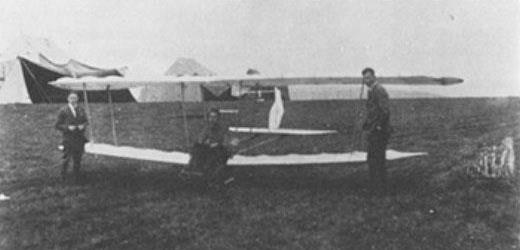| Type | Two seat training glider | |
| Engine | ||
| Dimensions | ||
| Weights | ||
| Performance | ||
| Type | Werk.Nr | Registration | History | |
| Built in 1923 | ||||
The FVA-4 was a lightweight, low-powered powered two-seater aircraft to provide cheap reliable training capacity for the flying group students.
After the relative success of the first three designs, the next aircraft to emerge from the FVA workshops was a biplane two-seater intended solely for ab initio training with new students at the FVA. Built to be easily maintained and repaired, the FVA-4 Pipö, (named after Wolfgang Klemperer's sister, “Pipö”), was a strut braced biplane constructed with wood covered with fabric. After the FVA-4 and the FVA-5 Rheinland (built simultaneously) were completed,Wolfgang Klemperer emigrated to the USA. The need to build a simple and easily repairable aircraft for beginner training had been identified by the FVA. It began in the years 1923/24 to emerge that the older FVA members moved away after completing their studies from Aachen and the newly added students were usually not former wartime pilot and thus could not fly. Also, Klemperer, who was primarily responsible for the successes of the FVA, had emigrated in 1924 in the United States. Performance in the 1922 Rhön competition had been unsatisfactory.








